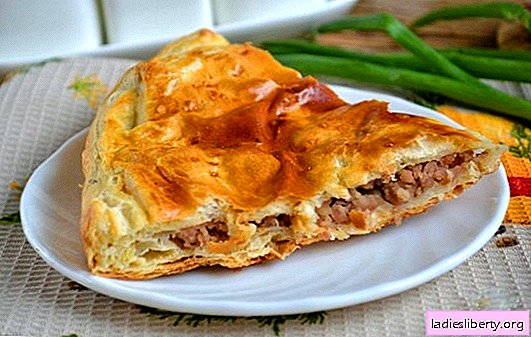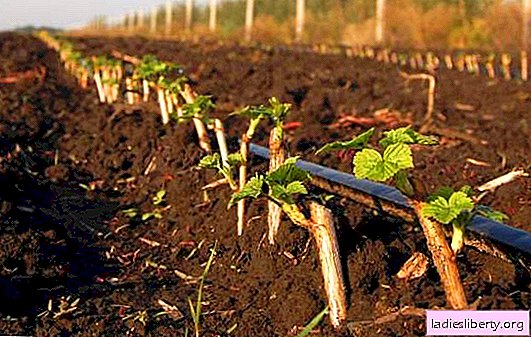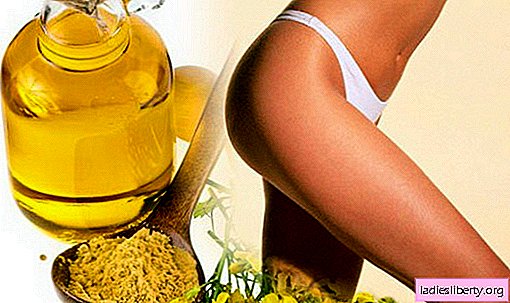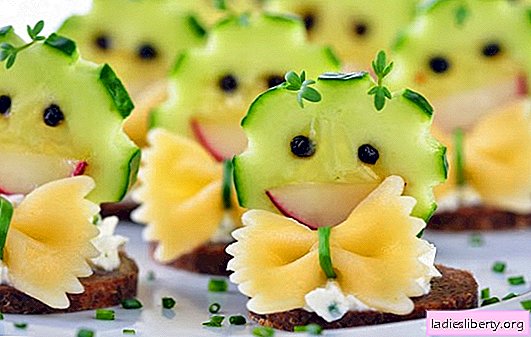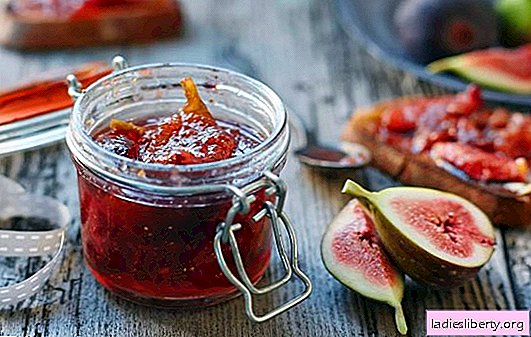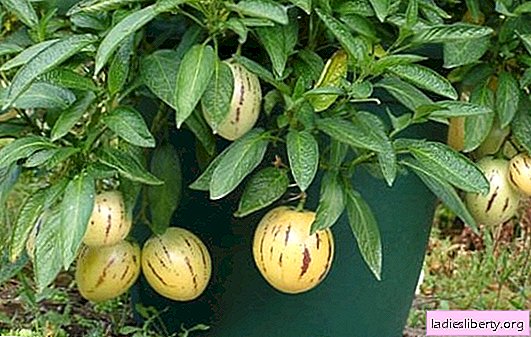
Pepino or melon pear is a vegetable of South American origin. In order for the evergreen shrub to please with aromatic and tasty fruits, you need to know all the secrets of its cultivation.
Caring for pepino is quite simple, so the plant is gradually gaining popularity in our latitudes.
Pepino Characteristic
Pepino is an evergreen low bush. It bears fruit in bright and juicy fruits, the shape of which is similar to a pear. The taste of pepino resembles a sweet melon, a slight aftertaste of pineapple or mango is felt. The consistency of the pulp of the fetus is more like a melon.
Pepino is 90% water, so it is recommended to include it in the diet menu. From the fruits of melon pear, you can make various preparations: jam, compotes, mashed potatoes or eat raw. In addition, pepino lends itself to drying and freezing, while maintaining valuable nutritional qualities.

Before eating, it is advisable to peel the vegetable, since it has a bitter taste. But seeds are optional. The fruits of the melon pear are well stored, easily tolerate transportation. In America, pepinos are grown for trade.
By type of growth, pepino is more like a tomato or pepper. This shrub, which grows strictly up, can form several stems. It develops quite quickly, needs support. Five months after the rooting of the cuttings, the plant blooms and sets fruit.
How to grow pepino in Russia
Do not forget that Pepino comes from South America. In the conditions of severe Russian winters, the bush is grown as a tub plant. A melon pear can withstand a short-term drop in temperature to -5 degrees, but it will not suffer stable frosts.
Growing pepinos and caring for the bush will require certain skills. It is best to propagate the melon pear by cuttings, which allows to increase the yield of the plant. When sowing pepino seeds, the nutritional value of the fruit is lost, they are less juicy and healthy, and the yield is sharply reduced.
In addition, pepino is demanding on watering and irrigation, although it can withstand short-term drought. In adverse conditions, the shrub suspends growth and discards leaves.
Growing pepino from cuttings
For vegetative propagation pepino will need cuttingscan be rooted stepsons plants. They retain varietal traits, easily root, seedlings bloom earlier.
To grow pepino on your own every year, you need to have a uterine bush. The selected healthy plant is transplanted into a tub in the fall and brought into the house. Shrub shoots are shortened by about a third of the length, watering is reduced. The temperature in the room should be at least 8 degrees.
In early spring, the pot is transferred to a room with a temperature of up to 16 degrees, watering is gradually increased and fertilizing is introduced. When shoots appear, they are cut out and rooted in a light substrate. During this period, the cuttings need a moist environment, so the container with the cuttings is covered with a bag or placed in a greenhouse.
Pictured are rooted cuttings of pepino before planting

Any land is suitable for planting cuttings, since the shrub is not picky about the composition of the soil. Further pepino cultivation continues in the greenhouse, on the balcony or in the room.
Planting pepino cuttings in a greenhouse
The sooner the Pepino seedlings are planted in the ground, the sooner the shrub will begin to bear fruit. Landing is carried out according to the following rules.
1. For 1 square. meter have up to 3 plants.
2. The temperature of the soil should not be lower than +20 degrees.
3. The air temperature in the greenhouse should not fall below 22-25 degrees during the day and 18 at night.
Before planting seedlings in the ground, it should be prepared. Good precursors to pepino are cucumber, onion, beans or garlic. The beds are loosened and dug since the autumn.
Pepino planting is carried out in trenches, the depth of which is up to 25 cm. The distance between the rows is about 7 cm. In the spring, fertilizers are applied to the beds:
• rotted manure - 3-4 kg / 1 sq. m;
• mature compost - 4-5 kg / 1 sq. m;
• ash.
Pepino seedlings are planted in a checkerboard pattern, deepening by a few centimeters. After planting, pepino water well and mulch the soil, which helps to maintain soil moisture. Pepino seedlings take root very well, under favorable conditions, the indicators are 100%.
When the plants adapt, trellises are installed along the rows so that the shoots of the bush do not break due to the weight of the fruits.

After 2-3 weeks, you can begin to form a bush. Leave only 2 stems, remove all unnecessary shoots and stepsons. They significantly reduce the yield of the plant.
Pepino is very bushy, stepsons break out every three days, leaving small stumps in the sinuses. This technique does not allow new stepsons to form in these same sinuses.
How to care for pepino
All shrub care comes down to the main actions:
• regular loosening of the soil, which increases soil aeration;
• weed removal;
• regular watering and spraying;
• top dressing;
• spraying from pests and diseases.
Pepino is watered every few days, allowing the soil to dry between waterings. Top dressing allows you to achieve abundant fruiting.
The first time additional food is introduced 10-12 days after transplanting seedlings into the ground. It is best to use a solution of mullein or bird droppings at this stage. Top dressing is carried out on moist soil. If the solution has got on delicate leaves, then it should be washed off.
The second time, pepino is fed after flowering, when the fruits are tied. Use infusion of green fertilizers.
The third feeding takes place during the period of abundant fruiting. It is best to use mineral fertilizers:
• ammonium nitrate - 15 g;
• superphosphate - 10 g;
• potassium sulfate - 15 gr.
All components are mixed and dissolved in 10 liters of water. They are fed in the evening or early morning after watering.
Pest and Disease Control
Pepino has recently appeared on our beds, but pests have already chosen the bush. The most common ones are:
• Colorado potato beetle;
• aphids;
• spider mite;
• whitefly.
In addition, pepino is affected by diseases such as late blight and bacterial rot. There are no specially developed preparations for pepino. To combat diseases and pests, complex fungicides and insecticides are used, which are recommended for tomatoes, peppers and eggplant.
It is necessary to protect from pests and diseases not only planting pepino, but also uterine plants. In winter, to combat diseases and pests, it is better to use infusions of tobacco, horsetail, marigold, wormwood or onion husks. Spraying is carried out several times with an interval of 5 days.
Pepino fruit ripening
Depending on the method of cultivation, melon pear pleases with fruits twice a year: in autumn and spring. If you grow a shrub in a greenhouse, then the harvest is in August - September.
Pepino fruits ripen for 2.5 months. A ripe vegetable is soft, its color changes to cream or light yellow, dark characteristic stripes are visible on the skin. Pepino fruits can be harvested unripe, they can reach the store or in the refrigerator. But you shouldn’t delay the cleaning. Overripe fruit loses its taste, is poorly stored.
If you follow all the rules of care, then growing pepino does not cause much trouble. It is important to remember that the shrub needs sunlight, fertilizing, watering and loose soil. Cutting tubing plant at any time of the year.


